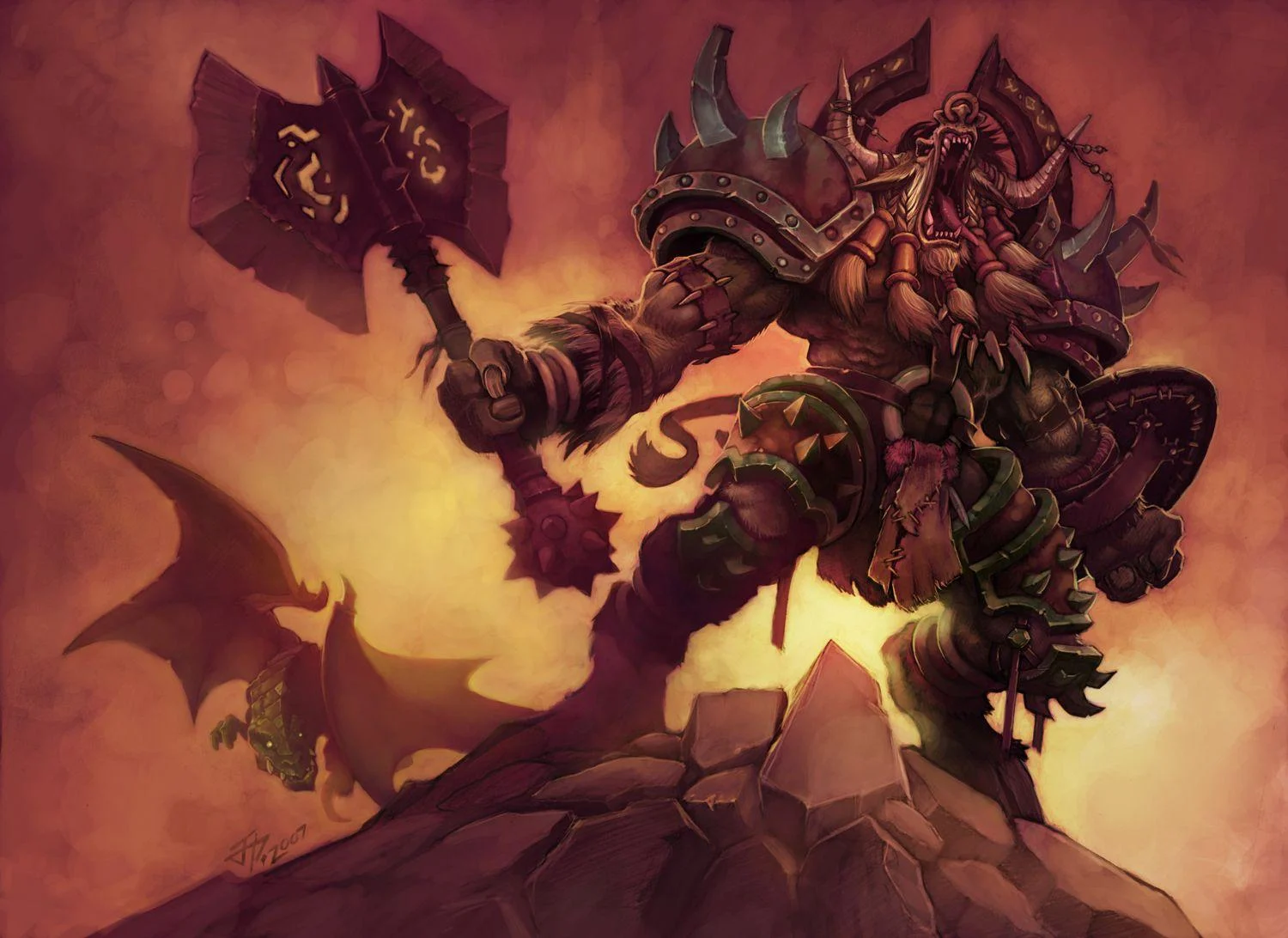Culture
Last rites
Minotaurs consider death to be the end of a life of battle and suffering, a peace met only with an abrupt end. For the curse to end, the body must not be burried. The exact rites depend on the clan.
Horns
Minotaurs are humanoid creatures with bull-like features, including horns. Minotaurs born with magical abilities, often characterized by wild magic due to their environment, are typically hornless. In Minotaur culture, these hornless individuals are considered separate from the traditional norms and are not held in the same regard as horned warriors.
Warriors among the Minotaurs are distinguished by the size of their horns. Those with larger horns are often seen as formidable warriors, while those with smaller horns tend to occupy lower-ranking professions. However, any Minotaur with horns has the potential to aspire to the title of warrior by proving their worth through their actions and accomplishments.
Within Minotaur culture, scars are highly respected as marks of bravery and strength. On the other hand, broken horns are viewed as a symbol of eternal defeat. The Minotaurs believe that their souls reside within their horns, and a broken horn signifies that the Minotaur has failed in their role as a warrior, denying them access to the afterlife. Similarly, hornless individuals, while accepted within the community, are unable to become home warriors due to the absence of their horns and the belief surrounding them.
Jewelry
Minotaurs take great pride in their horns and often adorn them with decorative elements when they are not engaged in battle. Their culture has developed a rich tradition of craftsmanship and jewelry-making, specifically centered around creating exquisite ornaments and jewels for their horns.
Traders who are fortunate enough to engage in commerce with the Minotaurs often seek out these unique ornaments and jewelry pieces as highly coveted items of trade.
Smoked Food
Despite their fierce reputation, Minotaurs possess a refined culinary tradition that is often overlooked. One aspect that stands out is their expertise in smoking and preserving food. The Minotaur smokehouses are renowned among chefs for their exceptional techniques and the exquisite flavors they impart to various ingredients. Through the art of smoking, the Minotaurs not only preserve their food but also elevate its taste, creating a distinct culinary experience that showcases their mastery of flavor.
Characteristics
Physical features
Minotaurs are large bipedal ungulates, described as half-bovine beings. On average, minotaurs are towering, with females standing at 9 feet in height while males reach 10 feet. Females and males alike are known to have a very large bulk and weight, long tails, large hooves, and three fingers (two fingers, one thumb) per hand. Both males and females have horns of varying size and shape. Minotaurs are a mostly diurnal race.
Minotaurs are large, muscular humanoids and bovine in appearance, complete with hooves and horns. They weigh anywhere from 400 to 800 pounds. Their immense bodies are covered with fine, short fur that ranges in color from black to gray to white to red to brown to tan and any mottled combinations or variations thereof. When minotaurs grow old, their pelts start to become dotted with gray. During the summer months, minotaurs use their ears and tails to flick off flies.
Most non-minotaur find them indistinguishable from one another. In fact, most non-minotaur find them indistinguishable from a certain four-legged farm creature.
Minotaurs can see in the dark better than humans, they lack darkvision but have a better perception in the dark anyway.
Names
The language of the minotaurs is often harsh and low sounding, which is reflected in the names of their children. The last name of a minotaurs is usually a family name, handed down through the generations. If the minotaurs has performed some act that has made an impression on the elders of his tribe, however, he may choose to take on his own last name to commemorate that act. minotaurs have several names. They receive a name at birth and another during a ceremony to celebrate reaching adulthood. This adult name describes some event in their lives or some notable individual characteristic: for instance, Blackhide, Earthborn, Halfhorn, Hidemaker, Riverwatcher, Scar, Splithoof, Stormchaser, or Windrunner. A minotaur may also acquire a third name that he uses when dealing with outsiders.
Male Names: Azok, Bron, Turok, Garaddon, Hruon, Jeddek, Motah, Ahul, Varg, Dezco, Turak, Helaku, Hurnahet, Torwa, Huum.
Female Names: Argo, Serga, Bessey, Beruna, Halfa, Tamaala, Winnoa, Chepi, Hahrana, Kamu, Torra, Jyn, Isashi, Tawn.
Family Names: Darkthorn, Thunderhoof, Stormhorn, Quillsplitter, Stonebreaker, Plainstalker, Spiritwalker, Ragetotem, Huntsworn, Lighthoof, Hawkseye, Dawnchaser, Thunderhorn, Winterbluff.
History
Origin
During the
War of the Ancients, demons poured into Toriel, plunging the realm into chaos. Many mortals, feeling hopeless and desperate for power, turned against their own kind and began worshipping the demons. Those who succumbed to this temptation found themselves serving
Baphomet, the demon lord, who bestowed upon them demonic gifts. As a result, they underwent physical transformations, sprouting thick horns atop their heads and growing long fur that covered their bodies. These were the first minotaurs to be born.
However, as the tide turned in the war, the demons eventually lost, and the minotaurs they had created were left behind. Captured and subjected to unimaginable torture, the curse placed upon them proved irreversible. Nevertheless, over the course of generations, enough minotaurs managed to free themselves or escape, forming their own independent society. Despite their newfound freedom, their demonic heritage continues to impose limitations on their technological progress and intellectual pursuits.
Notable members





Comments